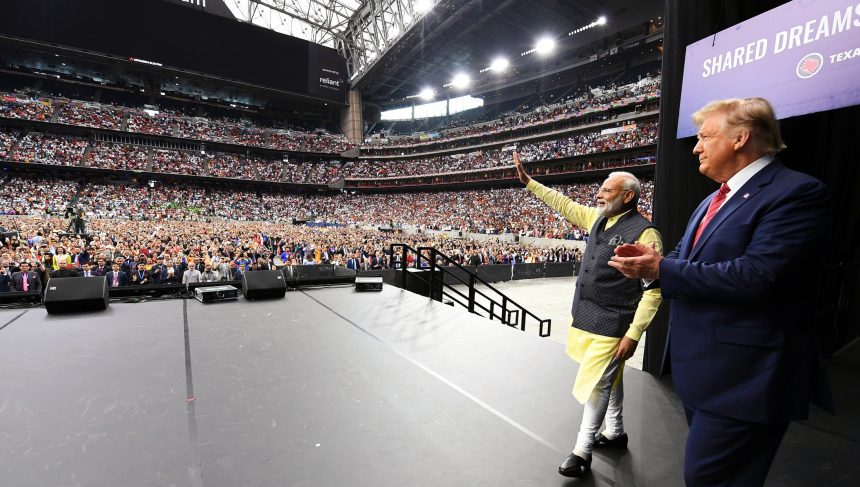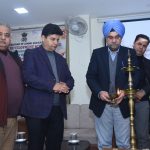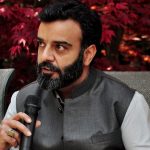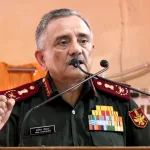The relation between the United States and India has been growing. It definitely was notable, but in steps, it has grown. There were challenges not unknown before Donald Trump became President in 2017 of the United States. This was the time when the relationship enjoyed a new personal dynamism in the historical perspective of the two nations which decided it. It started becoming more significant because of closer personal connection developed between the Indian Prime Minister, Narendra Modi, and the American President.
One of the most noticeable features of their relationship was the two participating in grand events. Events like the “Howdy, Modi!” rally in Houston or “Namaste Trump” event in Ahmadabad were the reflections of the ever-deepening relations the two democracies were enjoying. These events highlighted an affable camaraderie based on mutual respect between the two leaders.
Under Trumps presidency, India and the U.S. cooperated on numerous major issues but focused a lot on security and defense. Their joint efforts were mostly directed at counteracting China, whose power in the Indo-Pacific region was rapidly expanding; this required collaboration in a couple of fronts like joint military exercises. An example was the Malabar Naval Exercise.
Defense deals were a very essential part of the relationship: India acquired advanced weaponry and equipment like Apache helicopters or reconnaissance systems from the U.S. Furthermore, this helped boost its military power and also exhibited trust between both sides. On the energy front, this cooperation was also starting to look good. India was increasingly purchasing oil and gas from the United States, which helped it to be self-sufficient in supplying itself with export linkage for both nations.
Trade was a complex issue, though he often criticized India for costly American items held under a high tariff. He even referred to India as the “Tariff King”. Both worked through it, but not much was agreed in trade issues through discussions; only some breathe. One of the biggest hiccups was when India was stripped off from the Generalized System of Preferences (GSP) by the US in 2019, which has also ended the duty-free access for some Indian products in the U.S. markets. Nonetheless, countries have still maintained adding deeper trade relationships.
The Trump government policies directed towards immigration represented one of the challenges. A majority of skilled workers and students were affected because of stringent norms on H1-b visas. However, the Indian government influenced the government in the US to address the concerns of its skilled workers. The cultural bond between the two nations is still strong. In strengthening the bond, the Indian diaspora proved to be firmly rooted in the United States.
Indian-Americans stand out as one of the most significant and influential immigrant communities in the United States. By doing so, they bridge the gap between them. Reference to the problems; together the two countries agreed on a lot of issues. Both sides seemed to have the same opinion in the need for terrorism and regional stability.
In 2017, PM Modi had a Las Vegas joint speech during his US visit, and the speech was injurious to Pakistan as it harbored terrorism. Under the auspices of Quad, an initiative that includes the United States, India, Japan, and Australia, began to take off. This initiative achieved momentum to ensure peace and security in the Indo-Pacific region. It was a grand step for grappling with global issues.
The U.S government also put the weight behind India’s international aspirations by backing Indian efforts to join such forums as the Nuclear Suppliers Group (NSG) and pushing for India to have a permanent seat on the United Nations Security Council (UNSC), which turned out to be a fair bit of recognition to India as a powerful major country in the world arena. Education was another important aspect of the relationship.
Many Indian students pursued higher studies in the U.S., contributing to the strong cultural and academic ties. Efforts to promote student exchanges and academic partnerships further strengthened these connections. Both leaders also showed their commitment to peace and security. They worked on initiatives to combat global challenges like terrorism and cyber threats. Intelligence sharing and counterterrorism efforts became an integral part of their partnership. The personal bond between Trump and Modi played a big role in driving these efforts. Their leadership styles, which focused on strong decision-making and national interests, complemented each other and helped deepen the partnership.
The withdrawal of the U.S. from certain global agreements during Trump’s presidency, like the Paris Climate Agreement, created some differences. However, both nations found ways to cooperate on other issues of mutual interest. The optimism surrounding the future of India-U.S. ties lies in the foundation built during Trump’s first term. With Modi’s continued leadership in India, there is potential for even greater collaboration in areas like trade, defense, and technology. As the two leaders look to the future, they can focus on resolving longstanding issues like trade imbalances and visa policies. Strengthening people-to-people connections and cultural exchanges can also play a key role in enhancing the relationship.
The fight against terrorism will remain a priority for both nations. Joint efforts in intelligence sharing and defense cooperation can help address this challenge effectively. India and the U.S. also have an opportunity to work together on global health issues and climate change. Collaborations in these areas can benefit not just the two nations but the entire world. The “Namaste Trump” era marked an important phase in India-U.S. relations. It showcased the power of personal diplomacy and the potential of strong partnerships. While challenges remain, the friendship between Trump and Modi has created a solid foundation for the future. The bond between these two democracies is a testament to the strength of shared values and mutual respect.
As Donald Trump is again leading America, and this time it feels like a new beginning. With his strong personality and focus on making deals, Trump 2.0 is expected to bring fresh ideas and energy to global relations. On the other side, Prime Minister Narendra Modi is in his third term, bringing experience and vision to India’s growth. Both two leaders can take the India-U.S. relationship to a whole new level.
Both Trump and Modi share a style of leadership that is bold and decisive. They believe in strong nations and creating opportunities for their people. This common understanding has already helped in building trust between the two countries. As they continue to work together, areas like trade, defense, and technology will likely see even more progress. The personal bond between the two leaders will play a big role in strengthening ties.
Trump has always admired Modi’s vision for India, while Modi respects Trump’s straight forward approach. Their connection can help solve old issues like trade imbalances and visa rules, making it easier for both countries to work as partners. With Trump 2.0 and Modi 3.0, there is also hope for better cooperation in global matters. Both leaders understand the importance of fighting terrorism, ensuring peace, and addressing climate challenges.
By working together, they can not only help their own countries but also make the world a safer and better place. In this new phase, the India-U.S. relationship has great potential. With Trump’s leadership in America and Modi’s experience in India, the partnership can grow even stronger. This is a time of hope, progress, and new opportunities for both nations.
(Author is Professor and Chairman of Centre for Narendra Modi Studies (CNMS). Email: [email protected] )








